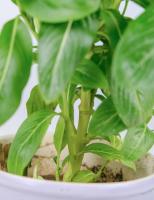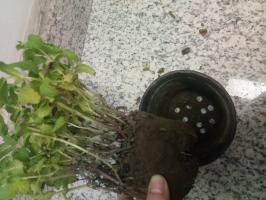Introduction
Fig trees are a popular fruit tree that is relatively easy to grow. They are mostly grown in warm, Mediterranean climates but can also grow well in other regions with the right planting conditions. This article will discuss the best conditions for planting fig trees.
The Ideal Climate for Fig Trees
Fig trees are native to the Mediterranean and need a climate that mimics this region for optimal growth. The ideal climate for fig trees is warm and dry, with mild winters and hot summers. This means that they will thrive in regions with long, hot summers and short, mild winters.
Planting Location for Fig Trees
The ideal location for planting fig trees is in a spot that receives plenty of sunlight. Fig trees require at least six hours of direct sunlight daily, so planting them where they can get full sunlight for the majority of the day is best. In addition, planting fig trees in a location protected from strong winds is important to avoid damage to the tree and its fruit.
Soil Requirements for Fig Trees
Fig trees require well-drained soil that is rich in nutrients. They do best in slightly acidic soil with a pH of 6.0 to 6.5. It is important to avoid planting the fig tree in soil that is too alkaline. If the soil pH is too high, it can cause leaf yellowing and reduced fruit production.
How to Plant Fig Trees
When planting fig trees, it is important to dig a hole that is twice as wide as the root ball and just deep enough to accommodate it. The hole should be filled with well-draining soil that is rich in nutrients. Make sure that the tree is planted straight and not too deep, as this can cause the roots to rot.
Care and Maintenance of Fig Trees
Fig trees require regular watering, especially during hot summers. They should be watered deeply once a week. Mulching the base of the tree can also help retain moisture and suppress weeds. Fertilizing the tree in the spring and fall with a balanced fertilizer can help ensure healthy growth and fruit production. Pruning the tree annually to remove dead wood and thin out the canopy can also help maintain health and improve fruit production.
Conclusion
In conclusion, fig trees are relatively easy to grow, but they require the right conditions to thrive. Planting them in a location that receives plenty of sunlight and is protected from strong winds, providing well-drained soil rich in nutrients, and consistent care and maintenance are crucial for the success of these fruit trees. With proper care, fig trees can produce a bountiful harvest of delicious fruit year after year.

 how many times do yo...
how many times do yo... how many planted tre...
how many planted tre... how many pine trees ...
how many pine trees ... how many pecan trees...
how many pecan trees... how many plants comp...
how many plants comp... how many plants can ...
how many plants can ... how many plants and ...
how many plants and ... how many pepper plan...
how many pepper plan...






























